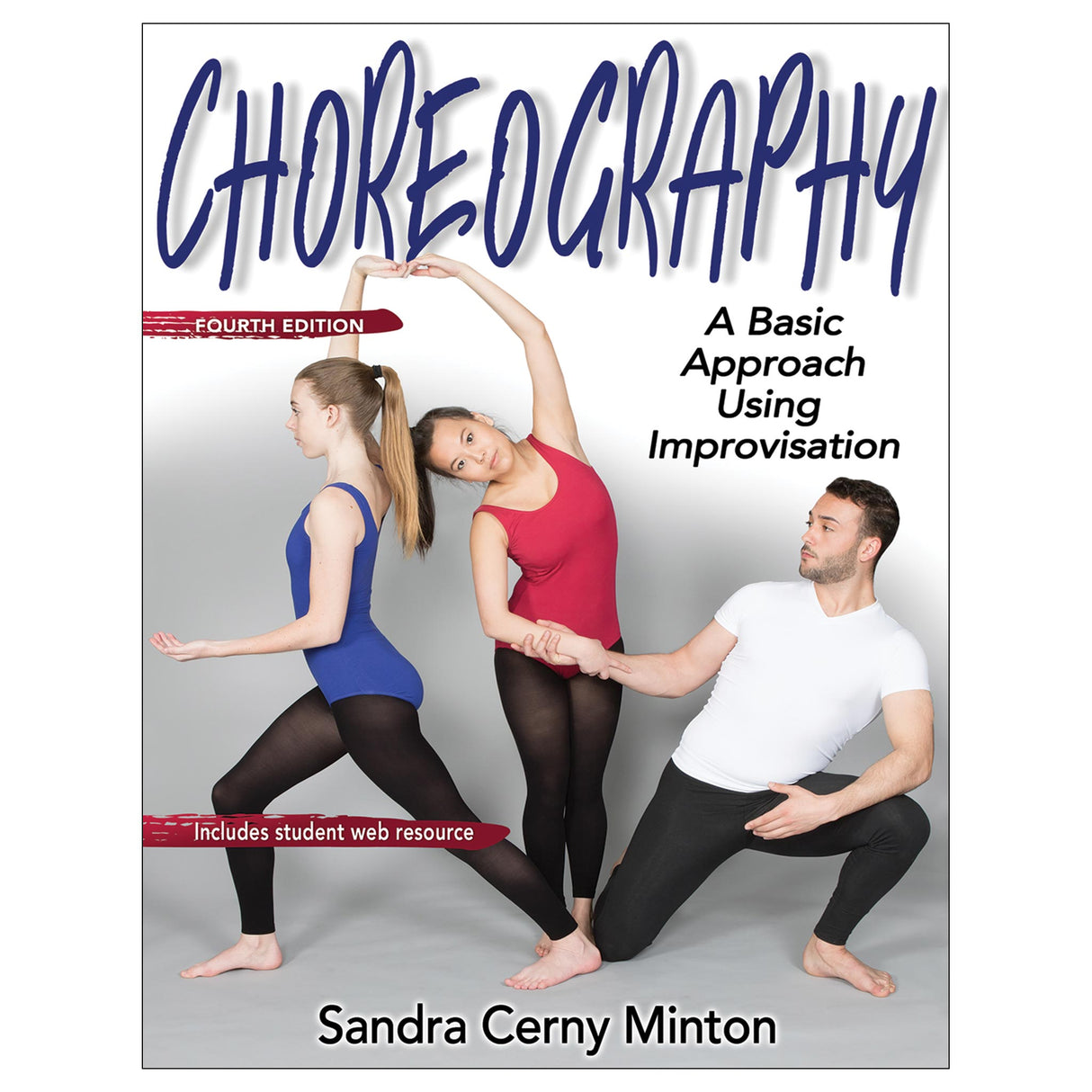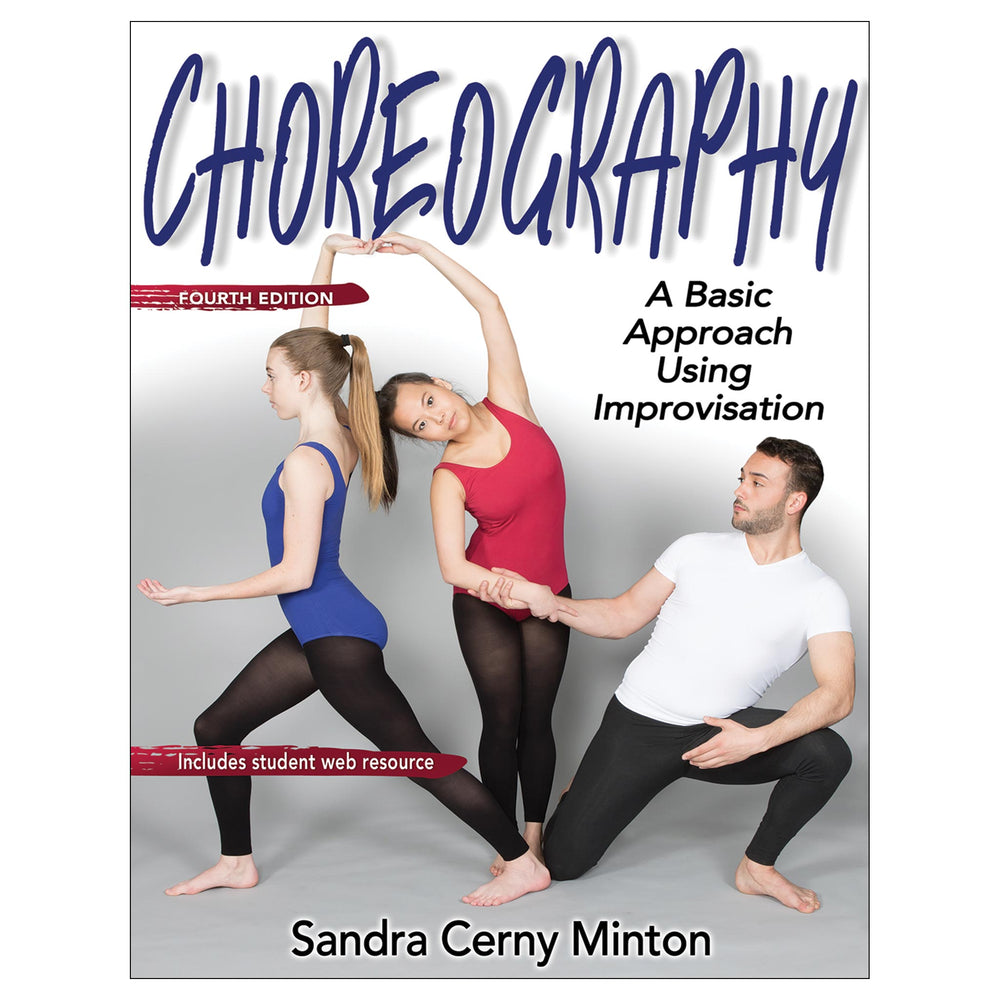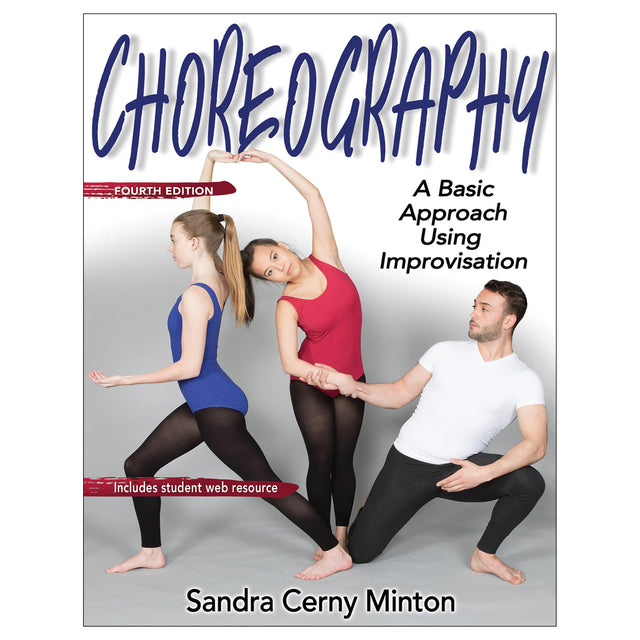Choreography 4th Edition With Web Resource
A Basic Approach Using Improvisation
Author: Sandra Cerny Minton
$39.00 CAD
Choreography: A Basic Approach Using Improvisation has long been a recognized standard in the field of dance education, and its fourth edition is replete with new and updated material and tools that will help students develop their skills in each step of the choreographic experience, from finding an idea to staging the performance.
Choreography is equally suited for use in high school and university classes. You can use it to guide your students through the creative and choreographic processes, applying instructional strategies such as problem solving, updated technology integration, and connections to dance education standards.
The latest edition of Choreography has these additions:
• A new student web resource that includes 23 video clips that reinforce the book's content, show the creative and choreographic processes presented in the book, and help students apply the choreographic elements to their own work.
• Updated or new chapter content that supports the dance education standards as they apply to the creative process, improvisation, and choreographic development and to the technical aspects of staging performances
• Expanded movement explorations to help students discover movement using more than one sense; these explorations are arranged by learning style (auditory, visual, and kinesthetic/tactile) and range from easy to more challenging in level
• Developing Your Skills sections revised to align with the National Coalition for Core Arts Standards processes of creating, performing, responding, and connecting; these sections help students apply what they have learned in the chapter as they relate to dance standards, and they are arranged from simple to complex to help students increase their learning
The book also includes problem-solving exercises to focus student thinking on the explorations and experiences they encountered in the chapter. Factual and conceptual aspects of the chapter activities are then addressed in follow-up questions, helping to engage students in critical thinking as they learn to transfer their understanding to other situations.
The new web resource will further students' creative and professional development in choreography. This resource contains video clips that show creative and choreographic processes presented in the book, editable forms and checklists that students can use, assignments that students can complete, and web links and resources for further study. Choreography also comes with an instructor guide that offers teacher-directed lesson plans and teaching tips.
The book is arranged into four chapters. Chapter 1 focuses on improvisation as the key to the choreographic process, and it provides a framework for creating movement and dances to help students understand the dance-making process. The chapter also offers solutions to common beginning choreographic problems. Chapter 2 explains the use of the craft of choreography in designing and shaping the dance. It discusses the use of stage space, the use of various forms of technology to enhance dance, and how to make more out of less by manipulating and varying movements. Chapter 3 explores what to strive for in shaping and forming a dance, and it describes common dance forms. In Chapter 4, students are introduced to the stepps involved in putting their dance onstage. Chapters 3 and 4 also include Experience in Action features, which encourage students to delve deeper into the chapter topic, and Choreography Challenge features, which challenge students to test their skills.
Choreography provides students with a complete choreographic experience, inviting them to share the joys of artistic expression through dance. As such, it is the go-to resource for teachers who are looking to provide meaningful experiences in a well-rounded learning environment and for students who are intent on improving their choreographic abilities.
Audience
Textbook for dance composition courses at high school and college levels.
Chapter 1. Exploring and Improvising Movement
The Creative Process
Observation and Feeling Response
Preparing to Create
Movement Discovery Insights
Solving Improvisational Challenges
Finding the Right Music
Exploring Your Movement Inspirations
Choreography Challenge
Chapter 2. Designing and Shaping the Dance
Manipulating Movement
Arranging Movement for Effective Communication
Creating a Total Picture
Choreographic Ideas From Postmodern Dance
Extending Dance Making With Technology
Choreography Challenge
Chapter 3. Identifying Choreographic Form
Choreographic Form and Development
Dance Genres or Styles
Subject Matter of Dance
Performer–Audience Connection
Finishing Touches
Developing as a Choreographer
Choreography Challenge
Chapter 4. Staging the Performance
Planning and Organization
Technical Considerations
Informal Concerts
Choreography Challenge
Instructor guide. Features teaching tips and teacher-directed lesson plans.





